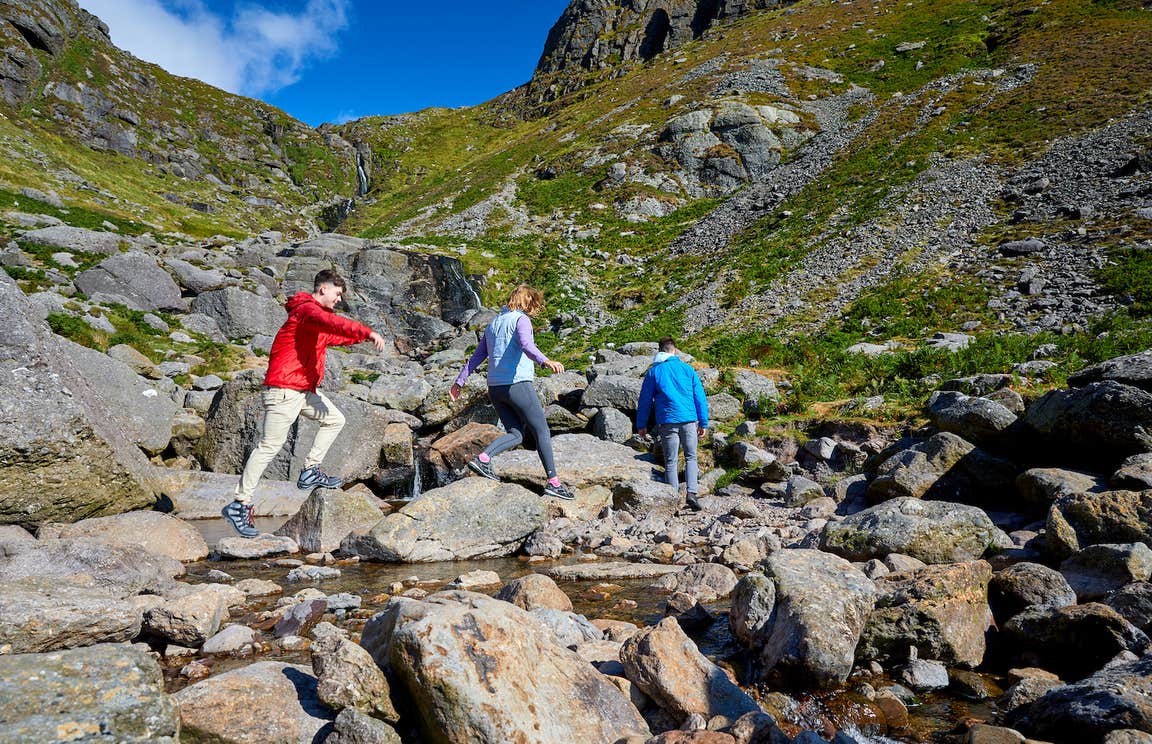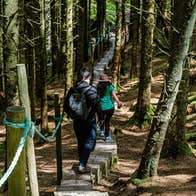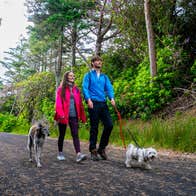The old saying ‘fail to prepare, prepare to fail’, applies to outdoor adventures. Bringing the appropriate equipment helps for a number of reasons. If you plan on cooking a meal on your camping trip, pack a camp stove which helps reduce your impact on the surroundings by avoiding burning wood and creating ash. Maps are very useful for keeping us on waymarked trails that are designated for walkers. Be sure to look at routes before leaving so that you can plan rest stops, get a bite to eat and fill up water bottles, which helps to reduce waste.
The wonderful walking trails through Connemara National Park and The Munster Vales are great places to relax and enjoy time outside, but these areas are also where farmers and landowners work. So, practice good etiquette by staying on waymarked trails, adhere to local rules and park in designated parking spaces. By doing this, we can all share the outdoors and respect each other.
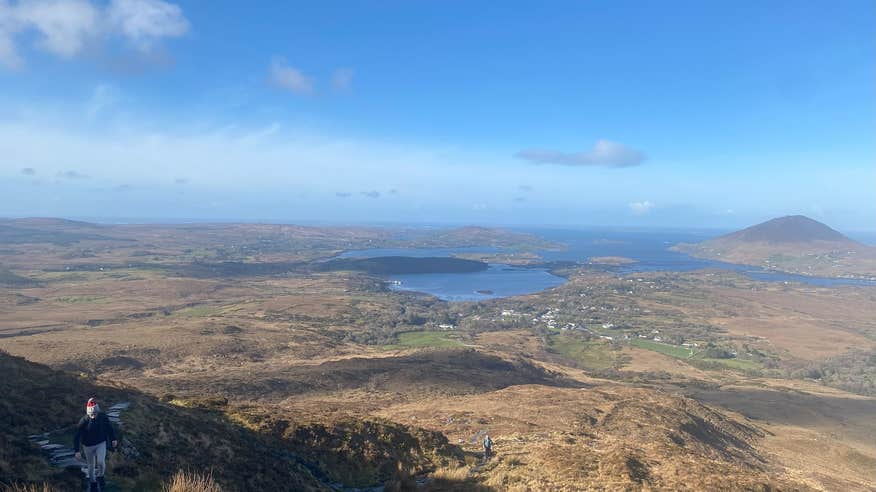
Roaming along coastlines and through forests, it's very possible to stumble upon farm or native wildlife. To protect local farmland and native wildlife, please keep all dogs on a leash, store all accumulated rubbish correctly and don't try to feed the animals.
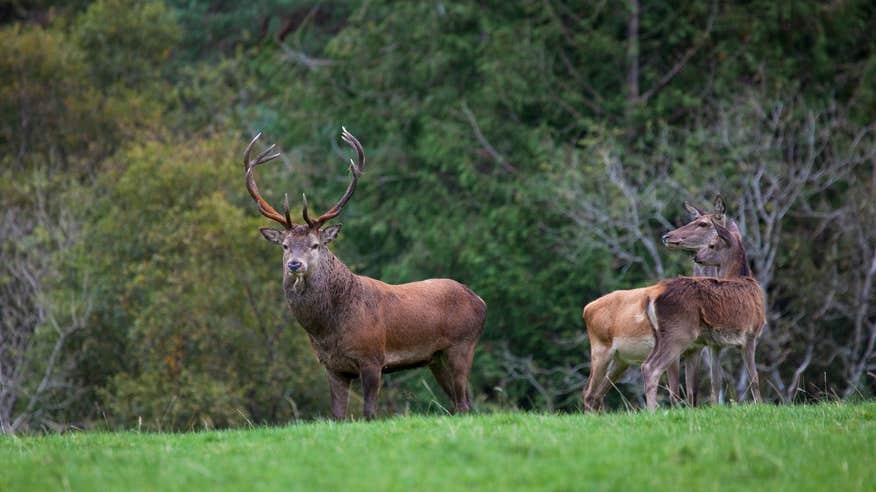
When walking and camping, stick to durable ground to avoid destroying precious ecosystems such as bogs and flora. Protect the environment around you by only hiking and camping on suitable ground. This will also help to keep both you and your equipment dry.
Part of the appeal of walking in Ireland is the beautiful scenery and landscapes. The green hills of Slieve Bloom and cliff walks along the Wild Atlantic Way are stunning places to surround yourself in nature, so it’s important that we leave it exactly as we found it for the next person. Rather than pluck the beautiful wildflowers, opt for a picture of them instead – it will last much longer.
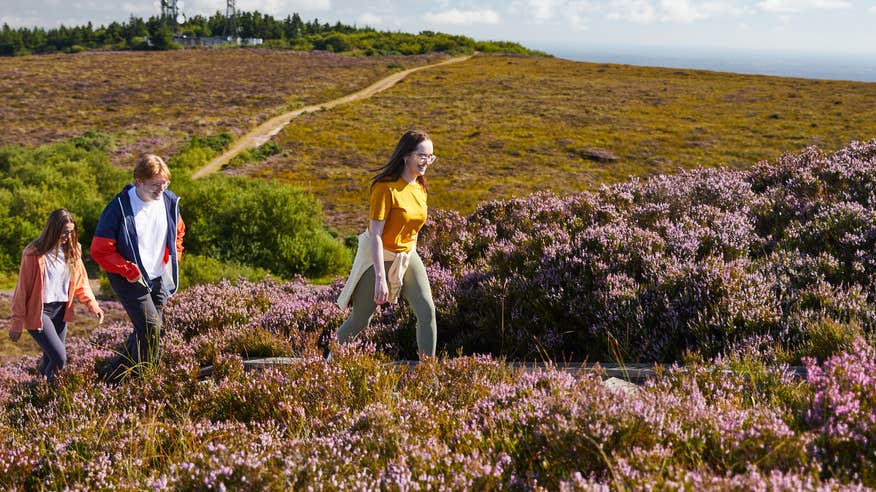
Exploring the many walks and trails across Ireland is no easy feat and requires adequate sustenance. Although you need to bring water, food and camp supplies, they can create waste. Energy bar wrappers, empty water bottles and food scraps can all damage the environment and wildlife, so it’s vital that you pack up what you brought with you and use bins along the trail.
There’s something special about huddling around a fire and cooking up a well-earned meal after a day in the outdoors, but we must use fire responsibly as it can destroy natural habitats and put people’s lives in danger if used incorrectly. Always check local regulations before setting off as some forests and national parks have banned the use of fires. Only use wood that has fallen naturally, make sure that you extinguish your fire properly and scatter the ashes widely.
Now that you know how to preserve the environment while hiking or camping, explore the best walking and hiking around the country.
